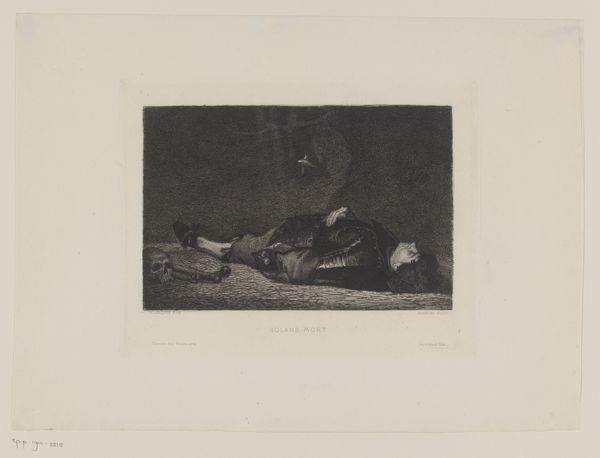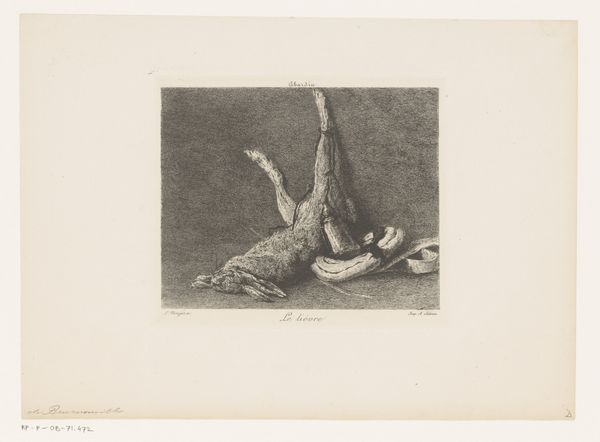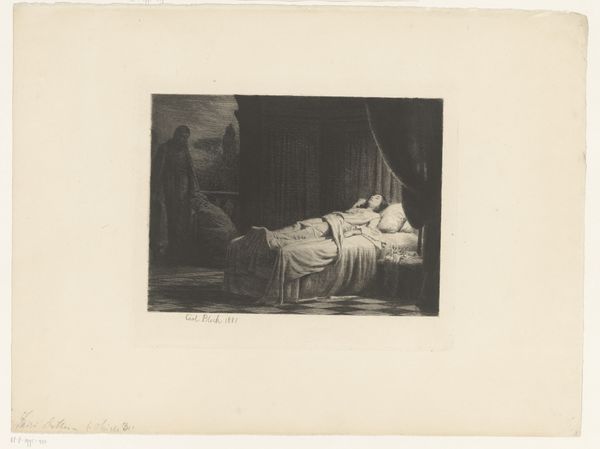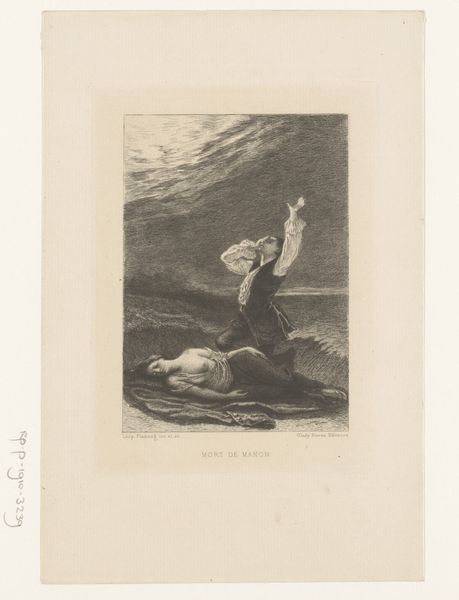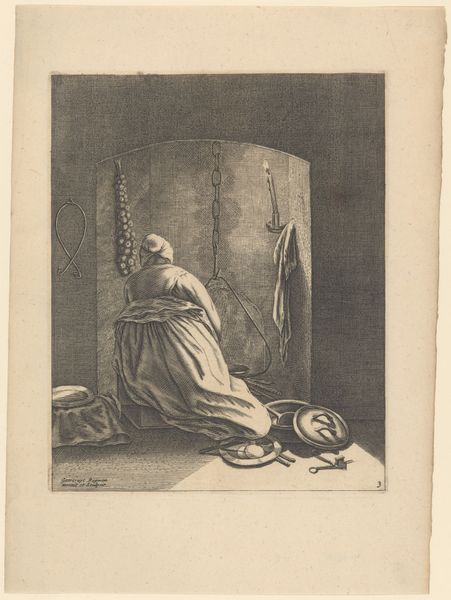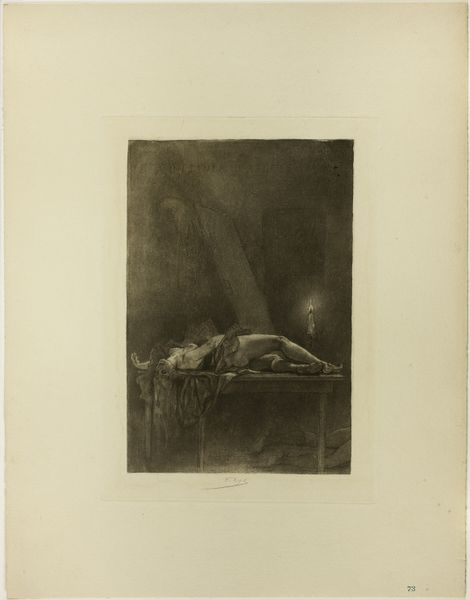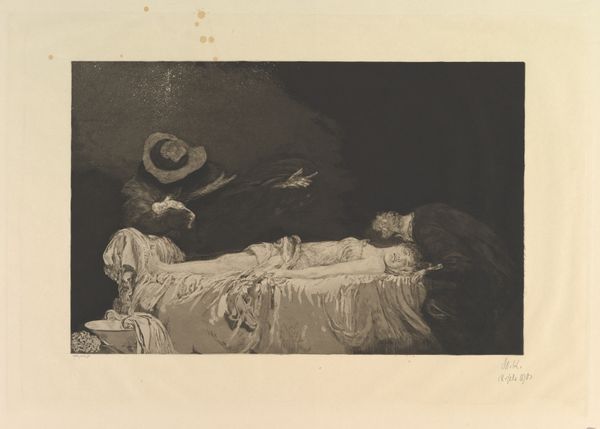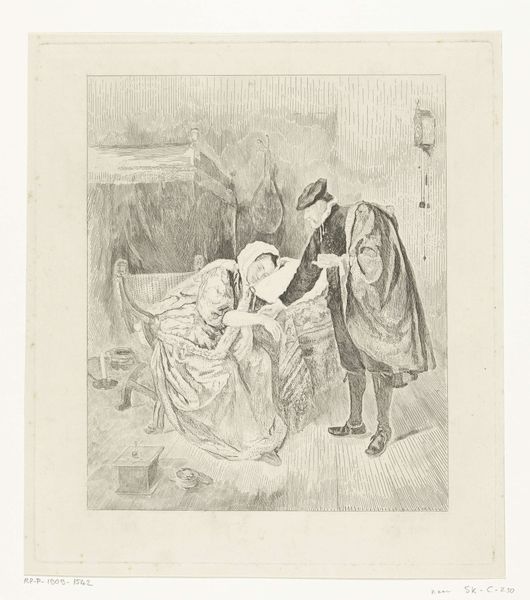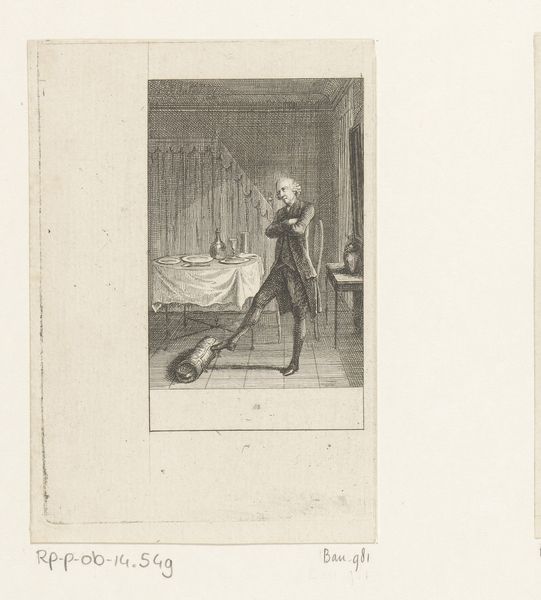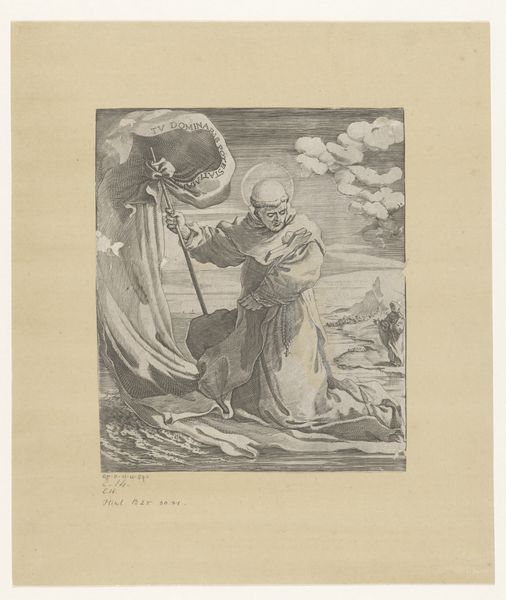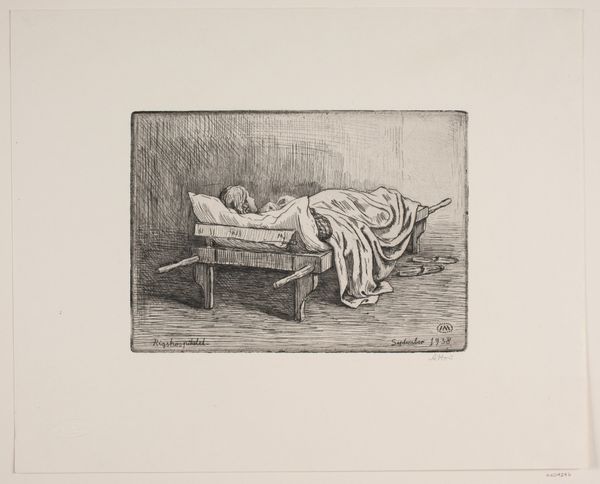
drawing, print, paper, ink, engraving
#
drawing
#
narrative-art
# print
#
figuration
#
paper
#
ink
#
romanticism
#
engraving
Dimensions: height 238 mm, width 320 mm, height 176 mm, width 242 mm
Copyright: Rijks Museum: Open Domain
Editor: So, here we have "The Worship of Mammon," a print and drawing piece by Johann Jakob Weber from the 19th century, currently residing here at the Rijksmuseum. It depicts a rather imposing, dark figure looming over another, chained one in apparent worship. It strikes me as very theatrical; how do you read this piece? Curator: I look at the material reality here. Consider the deliberate choice of engraving, a readily reproducible medium, fitting the rising industrial press. Weber’s process inherently links the "original" image to a larger system of distribution and consumption. We see this stark image, critiquing avarice, but the image *itself* participates in the economic structures it condemns, doesn't it? Editor: I see your point! The message is disseminated via the very 'Mammon' it criticizes! What do you think about the choice to use paper and ink? Curator: Precisely! The choice of ink on paper is not arbitrary either. It connects directly to the history of printmaking as a vital, and relatively inexpensive form of mass communication. Also, the stark contrast achieved by the ink – look at the textures created, for example. What does that contribute to the symbolic weight of the image? Editor: That shadow definitely enhances the dramatic and dire feel, right? It really emphasizes the stark difference in power and creates such heavy mood. Curator: Indeed, it amplifies the sense of oppression. Romanticism frequently uses nature symbolically. So what is the nature here? Absence of it! Now, reflecting on this analysis, have your initial reactions shifted? Editor: Absolutely! Understanding the means of production adds layers to my interpretation; I’m now seeing not just the image, but the conditions that allowed for its very existence, a fascinating paradox. Curator: Precisely. Analyzing art through the lens of its materiality and production brings it closer to a dialogue with broader economic and social realities, beyond mere aesthetics or subjective interpretation.
Comments
No comments
Be the first to comment and join the conversation on the ultimate creative platform.
